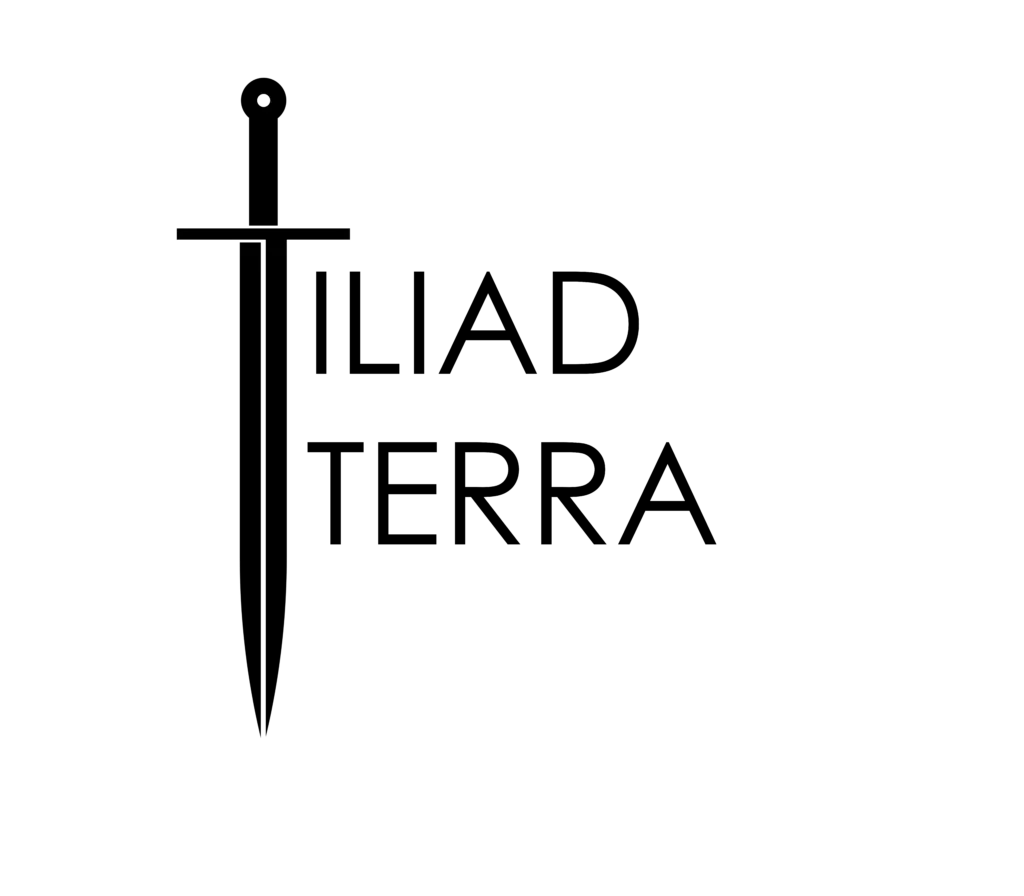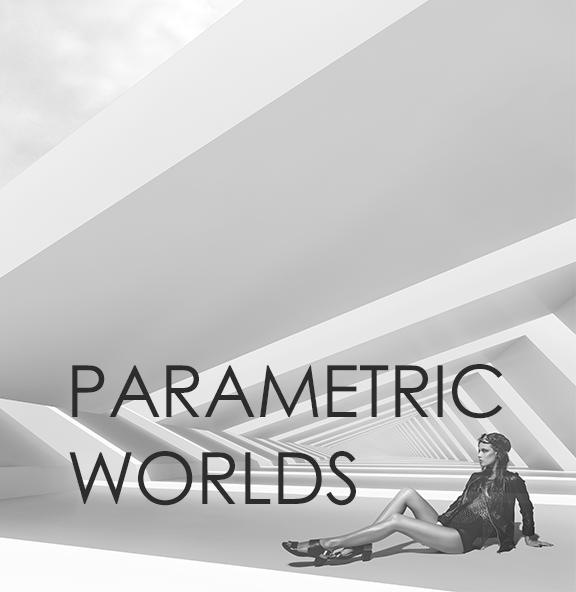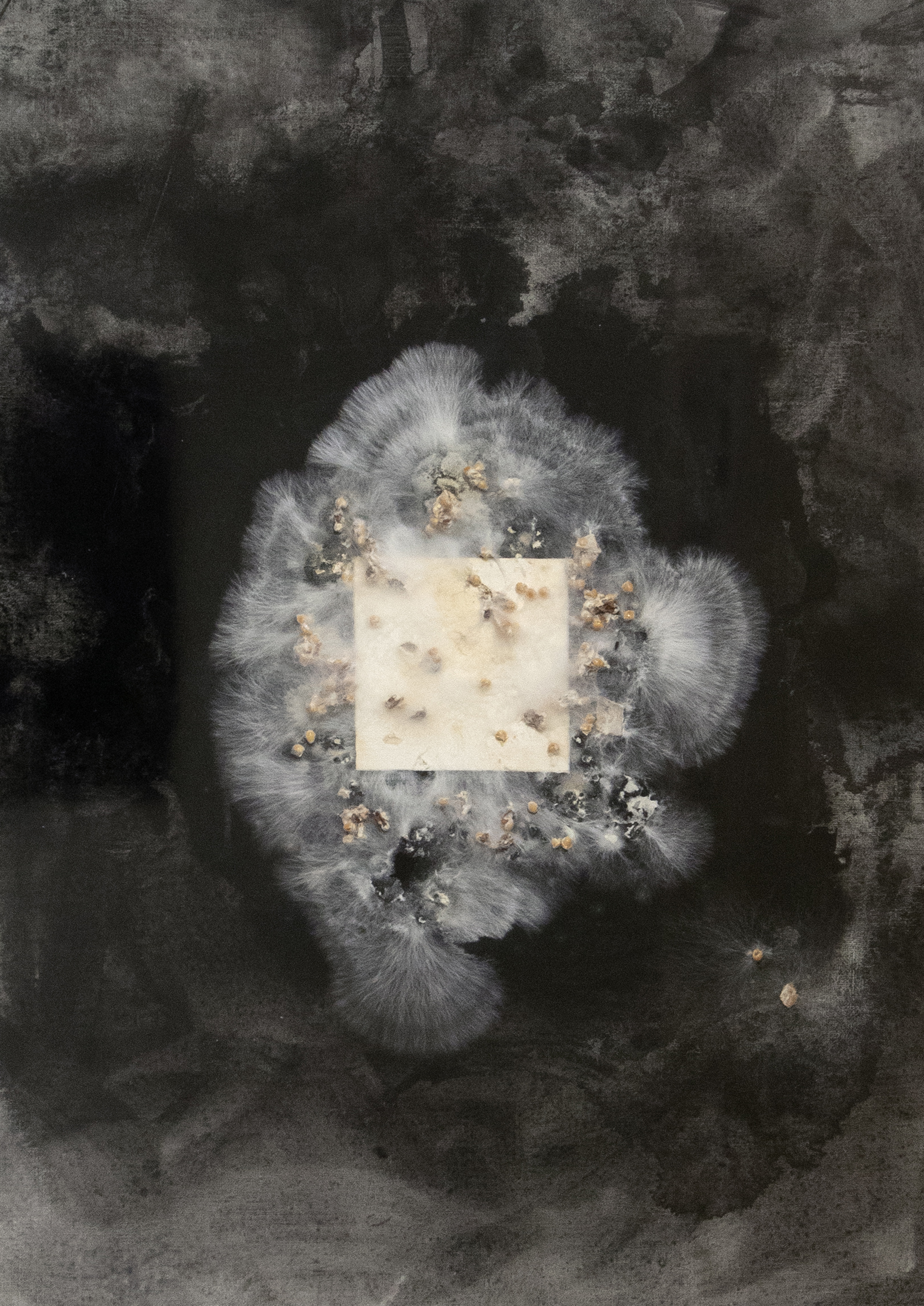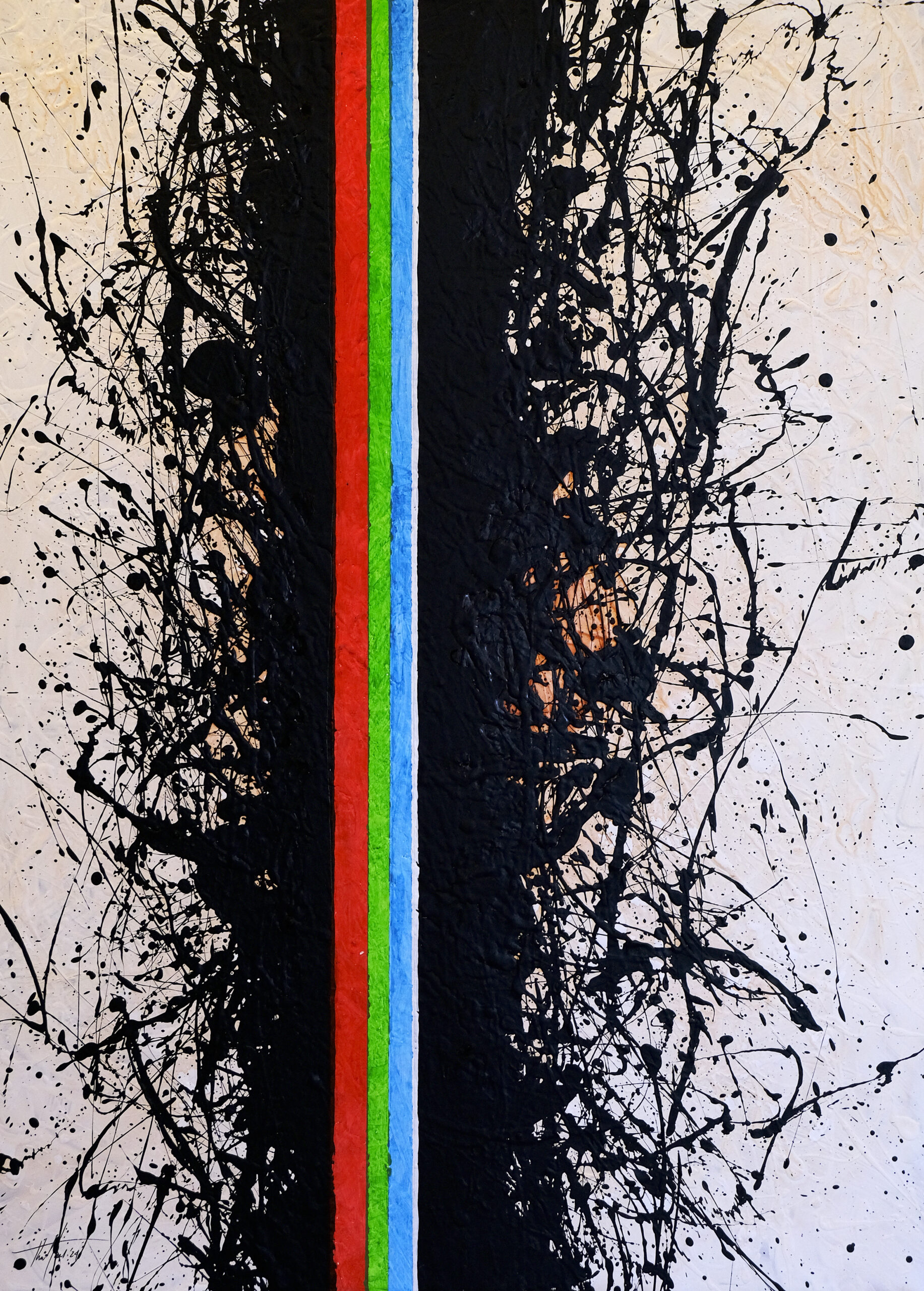The story of our search for design and the creative quest inherent within each of us dates back through the ages to a place where memory fades, to the very edges of our rendered world. We have come to a strange and eerily beautiful point on this journey where a new and uncharted world awaits us, a world manifested through parameters, at once old as it is exhilaratingly new. Once again, we are in the midst of the conversation between Orpheus and Pythagoras, where from the ether we construct new geometries to live within.
Perhaps a good place to start this story is by examining the etymology of the phrase Parametric Design. Parameter, or para from Greek meaning “subsidiary” and metron meaning “measure”, refers to being measured, constructed, or derived from the process of measure. The word design is a combination of de + signare, or belonging to and being about the mark or “of the sign,” a rather esoteric undertone to the word.
And so, parametric design is, in essence, the very act of making a mark with measured cadence, or design issuing from the quantum universe. However, before we meander into the more esoteric aspects of parametric design, we should delve deeper into what the phrase signifies more pragmatically.
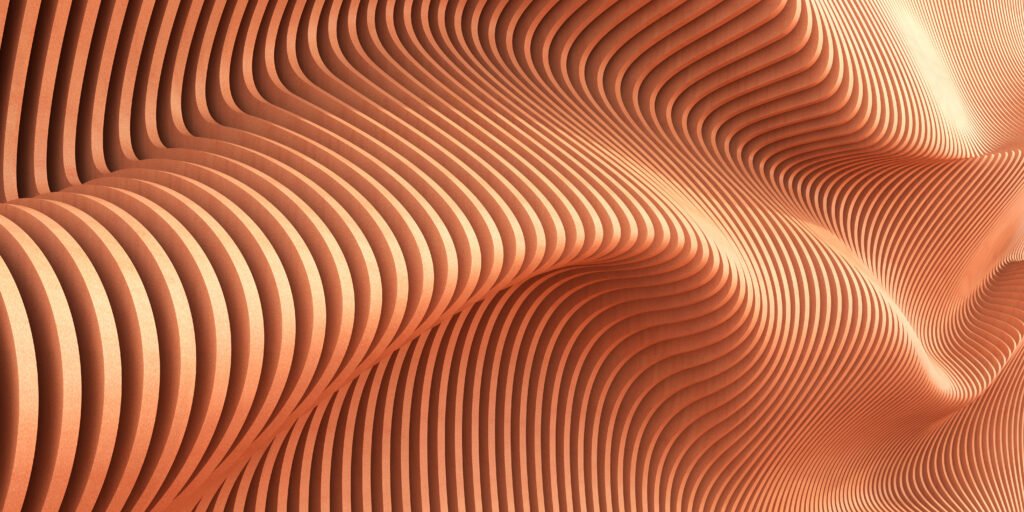
TECHNICAL STUFF
What exactly is parametric design, especially in terms of day-to-day pragmatic application? Parametric design, in essence, is a design process where the use of mathematical equations and algorithms is leveraged to generate or enhance design solutions.
The process is predominantly employed in fields of architecture, product design, and other industries where the intent is to create complex, often organic shapes and forms that would be otherwise difficult or time-consuming to create using traditional and human-only generated design methods. Although the jury is out on what really constitutes human-only processes in the age of digital tools. And BIM systems increasingly take on bigger tasks from the design process.
Still, as a simplified illustration, in parametric design, the designer inputs a set of parameters or variables into a computer program. Then the program generates a wide range of possible design solutions based on those parameters. Nothing complex there. The designer can then select from the gamut of solutions that best fits the project’s needs – a qualified best fit, as the endless array of possibilities become another decision point in itself — and refine it further if desired. Even in its rather nascent stage, parametric design is a powerful tool for exploring a wide range of design options quickly and efficiently.
Uses of parametric design include the generation of complex, organic shapes, and forms that would be truly difficult to create using non-computational and AI-assisted methods. Another application is the optimization of design solutions for specific performance criteria, such as energy efficiency or structural stability. And of course, let us not forget the rapid exploration of hundreds of design options using algorithms and computer programs – long gone are the days when we offered the client schematic options to choose from, and ultimately determine the highest and best use of a resource solution.
APPLICATION OF PARAMETRIC DESIGN
One of my favorite applications of parametric design is of course in the use of small and large-scale 3D printing of products and structures. The capability of parametric manufacturing fabricating complex building components is astounding, pushing the boundaries of our materials and methods. The work of CyBe and Apis Cor are just a few along the pioneering front. This process leaps the boundary of design and construction to an entirely new level, parametric design-build. Now imagine this capability using drones in ruggedized and remote locations. Perhaps I am being a tad imaginative… But then again, why not!
Let us not forget crowdsourced collaboration. Automating the design process with data-driven and computational resources avails us of a powerful capability beyond increased efficiency and accuracy. Facilitating dynamic collaboration between designers and engineers, and ultimately a multidisciplinary team of stakeholders through an integrated design process that is not confined to geographical proximity is a liberating and horizontal process that leverages the best of human and machine collaboration for the ultimate benefit of the project.
PARAMETRIC DESIGN TOOLS
There is a long and growing list of platforms and technologies that are assisting the https://alfa8.com/wp-content/uploads/2023/01/alfa8-iliad-terra-parametric-design-PARAMETRIC-WORLDS-1.png with parametric tools. A few highlights that we use at alfa8 are the following. (But this is by far not an exhaustive list, and the field is becoming ever more competitive with new innovations and synthesis. In fact, we are developing a unique parametric tool inhouse as a SAAS platform which will be unveiled early in 2023):
- AutoCAD and Rhino as computer-aided design (CAD) software help us create and manipulate 3D models of objects and environments. Examples of CAD software include.
- Scripting languages such as Python and Ruby, which are used with Sketchup and Grasshopper help us write custom algorithms and scripts that automate and expand the entire design process from the inception and pre-development all the way to the closeout.
- 3D printing software: 3D printing software is used to generate the instructions for a 3D printer to create physical objects from digital models. CATIA is a good example we are exploring, a 3D CAD software with strong tools for parametric design, simulation, and manufacturing.
- And for infographics and data visualization tools, Tableau and D3.js, are adeptly able to present and communicate parametric design solutions in a clear and understandable way.
THE BEGINNINGS OF PARAMETRIC DESIGN
The concept of parametric design has its roots in the field of architecture, where it was first introduced in the 1950s by the Greek-French architect and urban planner Georges Candilis. Candilis believed in the synthesis of form and function as a unique hybrid such that the design process should be driven by the functional and structural requirements of a building, rather than by aesthetics alone. He developed a system of design that used variables, or parameters, to generate a range of possible solutions based on these requirements. His designs yielded textured and articulated patterned buildings derived from manipulated parameters.
Subsequently, in the 1960s and 1970s, the concept of parametric design was further developed and popularized by architects such as Peter Eisenman and John Frazer. Eisenman used computers to create complex geometries and manipulate form in new ways, often pushing cultural and psychological limits, paving the way forward for the use of parametric design as it currently stands in fields beyond architecture.
Today, parametric design is used in diverse sectors and industries, including research, graphics, healthcare architecture, product design, engineering, manufacturing, and of course, architecture. It is often used in conjunction with CAD software, which allows for the creative process to quickly and easily change multi-vector variables and see the resulting modifications in the design in real-time.
But, in actuality, the origins of parametric design date much earlier than George Candilis’ work. Historians have an interesting way of classifying and categorizing time that often leaves important and salient aspects of information hidden in the murk, a condition which becomes further exacerbated due to rigid adherence of those who are invested in established structures of thought, thus preventing deeper understanding of the organic and fluid nature of change and transformation.
ANCIENT EXAMPLES OF PARAMETRIC DESIGN
In fact, the very act of architecture is parametric in nature, a measured exercise in creating environments. From the very beginning of building the first dwelling huts, humans have used parametric design, organically and intuitively, but still with a complex array of tools at their disposal – more on this later in this article. Consider these examples of ancient parametric design:
- Use of mathematical relationships to define the proportions of columns, arches, and windows. A key parametric example is the golden ratio, which was used in ancient Greek architecture to create harmonious proportions. Let us not further digress into the parametric origins of the golden ratio as it is manifested in our world…
- Geometric and parametric tools for construction were utilized by the Egyptians and the Greeks to create precise shapes and forms in their architecture and artwork. These techniques involved using a compass and straightedge to draw circles, lines, and geometric shapes, or, in other words, analog parametric tools akin to CAD
- The Romans were masters of modular systems that produced standardized units that were then repeated and assembled in various configurations for the construction of roads, aqueducts, and buildings still standing today as enduring legacies of parametric design.
PARAMETRIC DESIGN AND THE AI FACTOR
The implications of parametric technology interlaced with Artificial Intelligence in today’s design industry are quite profound.
AI has all the indications of inevitability and a demonstrated potential to be a powerfully useful tool for design, but it is not necessarily a better tool overall. AI can be used to generate design options and analyze their properties, which can clearly increase the dimension of possible solutions, and save time and effort compared to manual “analog” design processes. However, ultimately, AI systems are only as good as the data they are trained on and the algorithms they use, so they may not be able to produce designs that are as intuitively innovative or creative as those produced by the human mind. Although, the exponentially scaling ability for AI machines to store and recall vast quantities of data is rapidly changing the quality of AI-assisted parametric design.
AI vs HUMANS?
In the end, some think that AI systems cannot fully replace the role of human designers. But that’s not true – many functions ascribed and tasked to designers will be rendered more efficiently by AI and parametric tools. What will, however, remain true, is that the role of the designer will be transformed, and the industry as a whole will be disrupted as parametric design tools achieve more complex and fluid capabilities. The new designer will of course bring their own unique perspectives, experiences, and creativity to the design process. It will be indispensable for human designers to work alongside AI and Parametric systems to adapt and steward the folds of technology and use their judgment and expertise to evaluate and refine designs generated by the AI. A new parametric dance, if you will, between AI and human intelligence.
Rethinking the Future recently published an article on the potential impact of parametric design shaping how and what we design. It’s a brilliant articulation of the art of the possible using modern tools. I’ve linked below some additional examples of parametric design to explore and whet the appetite.


FEAR OF CHANGE
Resistance to change – fear of runaway technology, loss of control, and loss of inherent value are but a few of the reasons why humans resist the growth of AI and parametric design. Change aversion is intrinsically woven into our identities. We often resist adopting new technologies, including AI, and grudgingly embrace the implications of progress, the good, the bad, and the ugly, but also the beautiful.
In the same vein, fear of the unknown grips many in the design industry regarding AI in our midst, perhaps because we do not truly understand how AI works or what it is capable of. This fear may be fueled by sensualized media portrayals of AI as a threat to humanity. There is a bittersweet and existential struggle in this area. Others among us may feel that AI takes away our control over tasks or decisions we identify with and may be resistant to relinquishing this control to a machine.
MONUMENTAL SHIFTS IN THE DESIGN INDUSTRY
There is a deep and well-founded concern that AI will replace human jobs, leading to unemployment and economic disruption. In many industries, this has already happened. And it will happen in the design industry. It is inevitable. Perhaps a key antidote to this particular flavor of fear and a relevant question, therefore, is how we adapt to the advance of AI in the design industry.
There are stalwarts and detractors among us out there who are advocates of the many ethical concerns surrounding the use of AI, such as the potential for AI to perpetuate bias or to be used for malicious purposes. But this is nothing new. Every tool, every step of progress or regress has brought with it the capacity for good and evil. Parametric design and AI technologies are no different. But in the end, the hard lesson is that AI and computational design is here to stay and transform, disrupt, and co-create with us, and we better get used to it and learn this dance.
EDGE OF MACHINE
With all the strengths and positive qualities of AI and data-driven design tools, there are inherent limitations in what they can do. One point that frequently is omitted is that AI exists on the substrate of Human Intelligence, or rather AI/HI. The very syntax of AI is based on logic code derived from the human mind. In many ways, as we imagine and aspire to extend the edges of our so-called rendered world with the aid of AI, we notice certain circularity in the very logic: AI is really an extension of our own mind, organic and natural as the beaver dam or the beehive, constructed by natural beings.
AI and parametric creative tools are only as good as the data they are trained on: If the data used to train an AI system is biased or incomplete, the AI system will be biased or incomplete as well. AI cannot think like us, nor does it have the ability to feel or understand things in the same way that we do. They are not capable of creativity, empathy, or independent thought.
THE EXPANDING POTENTIAL OF AI
While AI systems can learn from data, they do not have the ability to learn from experience in the same way that humans do. They struggle to apply what they have learned in one context to a new situation.
And while AI can only do what it is programmed to do, and it cannot learn new tasks or skills without being explicitly programmed to do so, this may change as the complexity of programming diminishes that gap between contextual scenarios.
Like all systems and organisms, AI systems are vulnerable to cyber-attacks and other forms of misuse. On a fractal ever-expanding Mandelbrot set, the ramification of systems failure for AI can be massively impactful, shifting civilizations. But we are speaking only of the germination of potentialities at this point in time.
PARAMETRIC DREAMS
Synthesis of consciousness comes to mind, especially as we create and manifest destiny. I am particularly reminded of the writings of Philip K. Dick in this area. PKD, as you may know, was a science fiction writer who explored themes of artificial intelligence, consciousness, and reality. Many of his novels have been adapted into films, including “Blade Runner,” “Minority Report,” and “Total Recall.”
One of my favorite novels of his, “Do Androids Dream of Electric Sheep?” was later adapted into the film “Blade Runner,” which explores the concept of artificial intelligence and what it means to be human in the age of AI. Far from technology acting as a panacea for human struggles, the ubiquitous presence of AI had rendered a retro-futuristic dystopian world that painfully pitted humans against machine sentience. The story follows a bounty hunter tasked with tracking down rogue androids who have escaped from an off-world colony in search of their creator and sense of purpose.
AI’S ROLE IN THE FUTURE
I wonder what role, symbiotic or destructive, will AI and scaling parametric design tools play in helping us create a better world. We have been around the whirlwind long enough to note that there are no utopias to be designed or is there evidence for engulfing dystopias to darken the skies over us? There is an inherent intelligence in nature and natural ecosystems that strives to balance between light and dark despite our wild imaginations to the contrary. We are faced with an endless string of choices at each and every single moment in our creative stories. This is especially true as we seek to design, as we search for the sign, and determine, make our place, build our homes, and design our cities.
How we choose to embrace AI as an inevitable design partner remains to be seen. Certainly, there are many of us who are resisting this change, and yet there are those who are feverishly embracing the elegance of pure data generating hereto unimagined designs that push the limits of everything we have come to know.
THE HUMAN HAND
Speaking of streams of pure data generating creative masterpieces of design, have we considered the human hand? Imagine, for a moment, the complex volumes of data and information that rapidly flow from the human mind, coordinated through the eyes, and into the hands, measure by measure, parameter by parameter, in a complex symphony of actions that yield an elegant pencil line on a parchment detailing the capital of an ionic column.
Our hands allow for a level of precision, dexterity, and creativity that cannot be achieved by machines. The ability to manipulate objects and materials with our hands enables us to create intricate and complex designs that would be difficult or impossible to achieve using machines. The human hand is also capable of adapting to different tasks and materials, allowing us to work with a wide range of materials and techniques.
Most significantly the human hand can express emotion and convey meaning through gestures, which is an important aspect of our creative force, achieving the intangible, the poetic.
The human hand is a spectacular creative tool for design. It is also a data-driven parametric tool with profoundly ancient origins. In this light, parametric design is an ancient process intrinsic to everything we do, and its latest iteration augmented with Artificial Intelligence is but an extension of our creative quest for design, our search for meaning, and defining our place in the realm of Earth.
You may want to explore further design concepts and possibilities of using parametric design tools. Parametric Architecture, PA, is a terrific and rich online resource to get you started on your way. I will leave you with a simple dance, at once beautiful, frightening, sad, pathetic, empowering, endearing, menacing, oh the emotions we will have with this one… Okay, all together now.
